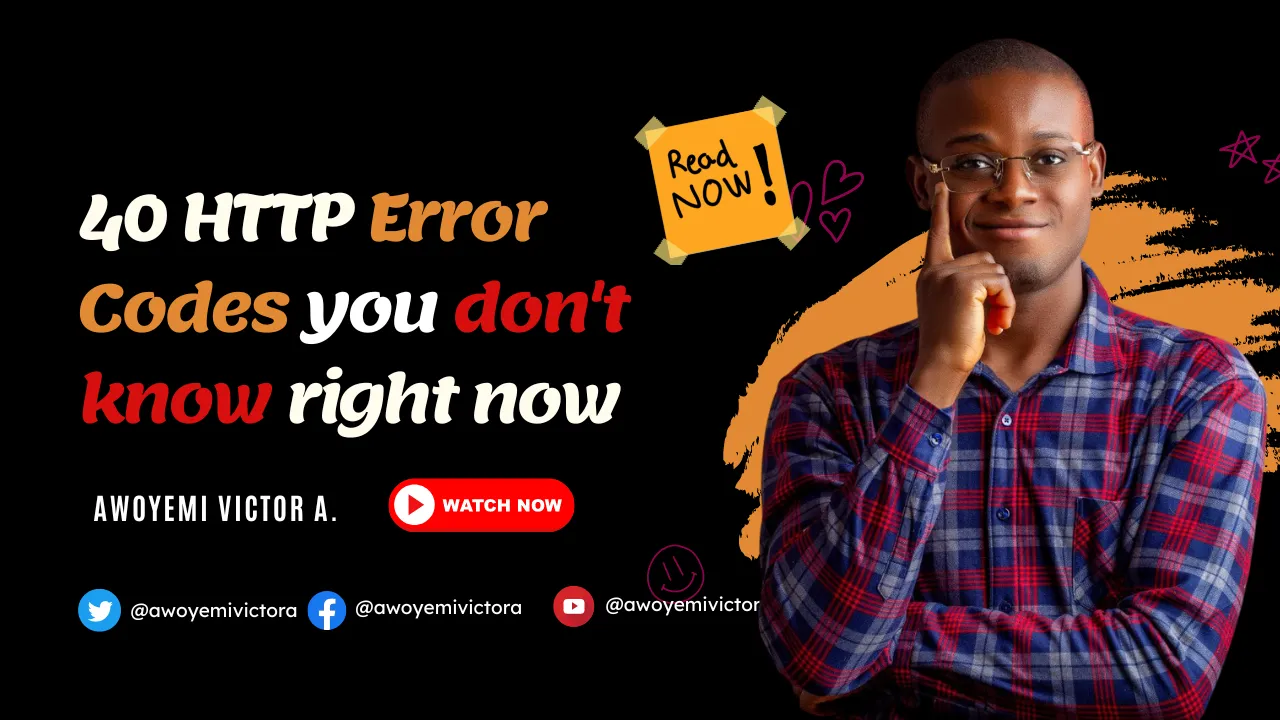Every HTTP response from the server has a specific numeric “status code”. For easy remembrance, here are the five ranges of codes you should know:
- 1xx (Information): Request received, server is continuing the process.
- 2xx (Success): The request was successfully received, understood, accepted and serviced.
- 3xx (Redirection): Further action must be taken in order to complete the request.
- 4xx (Client Error): The request contains bad syntax or cannot be understood.
- 5xx (Server Error): The server failed to fulfill an apparently valid request.
http.server.BaseHTTPRequestHandler.responses contains all the useful dictionary of response codes that shows all the response codes used by RFC 2616. They include the following:
100: Continue, Request received, please continue
101: Switching Protocols, Switching to new protocol; obey Upgrade header.
200: OK, Request Fulfilled, document follows.
201: Created, Document created, URL follows.
202: Accepted, Request accepted, processing continues off-line.
203: Non-Authoritative Information, Request fulfilled from cache
204: No Content, Request fulfilled, nothing follows.
205: Reset Content, Clear input form for further input.
206: Partial Content, Partial content follows.
300: Multiple Choices, Object has several resources — see URI list.
301: Moved Permanently, Object moved permanently — see URI list.
302: Found, Object moved temporarily — see URI list.
303: See Other, Object moved — see Method and URL list.
304: Not Modified, Document has not changed since given time.
305: Use Proxy, You must use proxy specified in location to access this resource.
307: Temporary Redirect, Object moved temporarily — see URI list.
400: Bad Request, Bad request syntax or unsupported method.
401: Unauthorized, No permission — see authorization schemes.
402: Payment Required — No payment — see charging schemes.
403: Forbidden, Request forbidden — authorization will not help
404: Not Found, Nothing matches the given URI.
405: Method Not Allowed, Specified method is invalid for this server.
406: Not Acceptable, URI not available in preferred format.
407: Proxy Authentication Required, You must authenticate with this proxy before proceeding.
408: Request Timeout, Request timed out; try again later.
409: Conflict, Request conflict/
410: Gone, URI no longer exists and has been permanently removed.
411: Length Required, Client must specify Content-Length.
412: Precondition Failed, Precondition in headers is false.
413: Request Entity Too Long, Entity is too large.
414: Request-URI Too Long, URI is too long.
415: Unsupported Media Type, Entity body in unsupported format.
416: Requested Range Not Satisfiable, Cannot satisfy request range.
417: Expectation Failed, Expect condition could not be satisfied.
500: Internal Server Error, Server got itself in trouble.
501: Not implemented, Server does not support this operation.
502: Bad Gateway, Invalid responses from another server/proxy.
503: Service Unavailable, The server cannot process the request due to a high load.
504: Gateway Timeout, The gateway did not receive a timely response.
505: HTTP Version Not Supported, Cannot fulfill request.
I hope this article has been helpful to you. Don’t forget to give me a clap 👏 and follow me on twitter and facebook.

